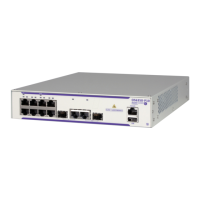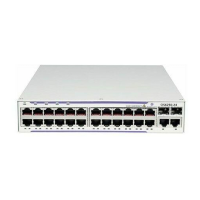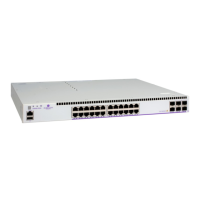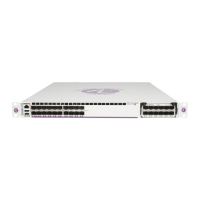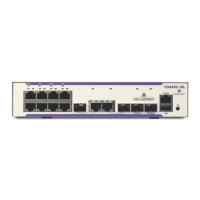Configuring Dynamic Link Aggregation Dynamic Link Aggregation Overview
OmniSwitch AOS Release 8 Network Configuration Guide December 2017 page 9-5
Dynamic Link Aggregation Overview
Link aggregation allows you to combine physical connections into large virtual connections known as link
aggregation groups.
You can create Virtual LANs (VLANs), 802.1Q framing, configure Quality of Service (QoS) conditions,
and other networking features on link aggregation groups because switch software treats these virtual links
just like physical links. (See “Relationship to Other Features” on page 9-7 for more information on how
link aggregation interacts with other software features.)
Link aggregation groups are identified by unique MAC addresses, which are created by the switch but can
be modified by the user at any time. Load balancing for Layer 2 non-IP packets is on a MAC address basis
and for IP packets the balancing algorithm uses the IP address as well. Ports must be of the same speed
within the same aggregate group.
The OmniSwitch implementation of link aggregation software allows you to configure the following two
different types of link aggregation groups:
• Static link aggregate groups
• Dynamic link aggregate groups
This chapter describes dynamic link aggregation. For information on static link aggregation, please refer
to Chapter 8, “Configuring Static Link Aggregation.”
Dynamic Link Aggregation Operation
Dynamic aggregate groups are virtual links between two nodes consisting of physical links. Dynamic
aggregate groups use the standard IEEE 802.3ad Link Aggregation Control Protocol (LACP) to
dynamically establish the best possible configuration for the group. This task is accomplished by special
Link Aggregation Control Protocol Data Unit (LACPDU) frames that are sent and received by switches on
both sides of the link to monitor and maintain the dynamic aggregate group.
The figure on the following page shows a dynamic aggregate group that has been configured between
Switch A and Switch B. The dynamic aggregate group links four ports on Switch A to four ports on
Switch B.

